English Version
Hello dear community of travellers! This time I will share with you images of my tour of one of the most emblematic and busy places in Havana, the ‘’Boulevard de Obispo‘’. Located in the very heart of Old Havana. It is one of the most popular streets of the historical centre, with a length of one kilometre, it extends from the Avenida del Puerto to Monserrate Street. It was originally called San Juan because it led to the church of San Juan de Letrán del Consulado. Later, in 1897, it was named after Captain General Valeriano Weyler, but in 1898 the Havana people destroyed the tiles in allusion to his name and in 1905, it was named after Pi Margall, in commemoration of the man who was a passionate defender of Cuba's rights and independence from Spain. Finally, in 1936, with the establishment of the old and traditional names of the capital, it was identified with the name it bears today.
A panoramic view of the entrance to the Boulevard in the background. On either side of the image are the Museum of Fine Arts (on the right) and the Kempinski Hotel (on the left).
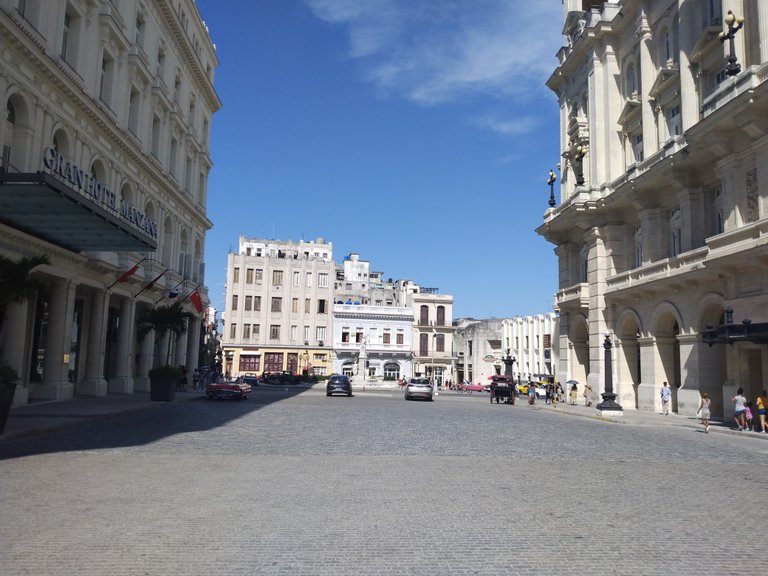
Just at the beginning of the Boulevard we find the famous bar-restaurant ‘’Floridita‘’ founded in 1817, where you can enjoy prestigious cocktails and other succulent drinks such as the famous Mojito ‘’Daiquiri‘’, favourite drink of the famous American writer Ernest Hemingway. That is why this bar got its slogan ‘’The cradle of the daiquiri‘’.
You can see how at one side of the Floridita there are some yellow tricycles with a whimsical shape, known as ´´cocotaxis´´ because they resemble this fruit
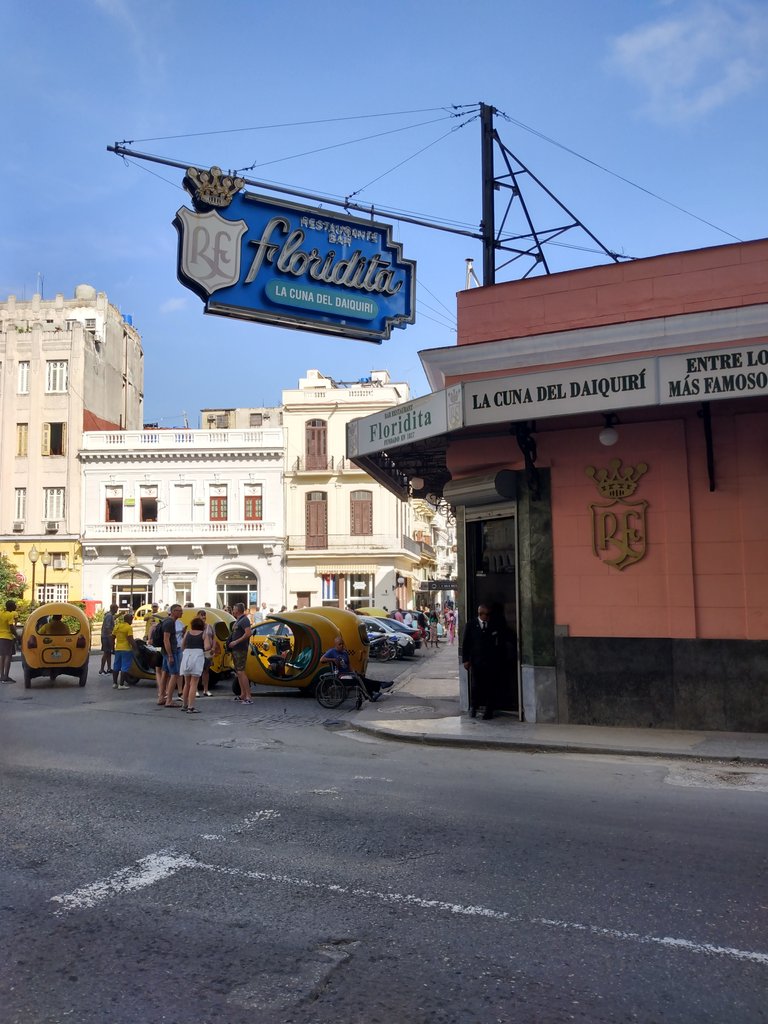
Floridita bar-restaurant logo.
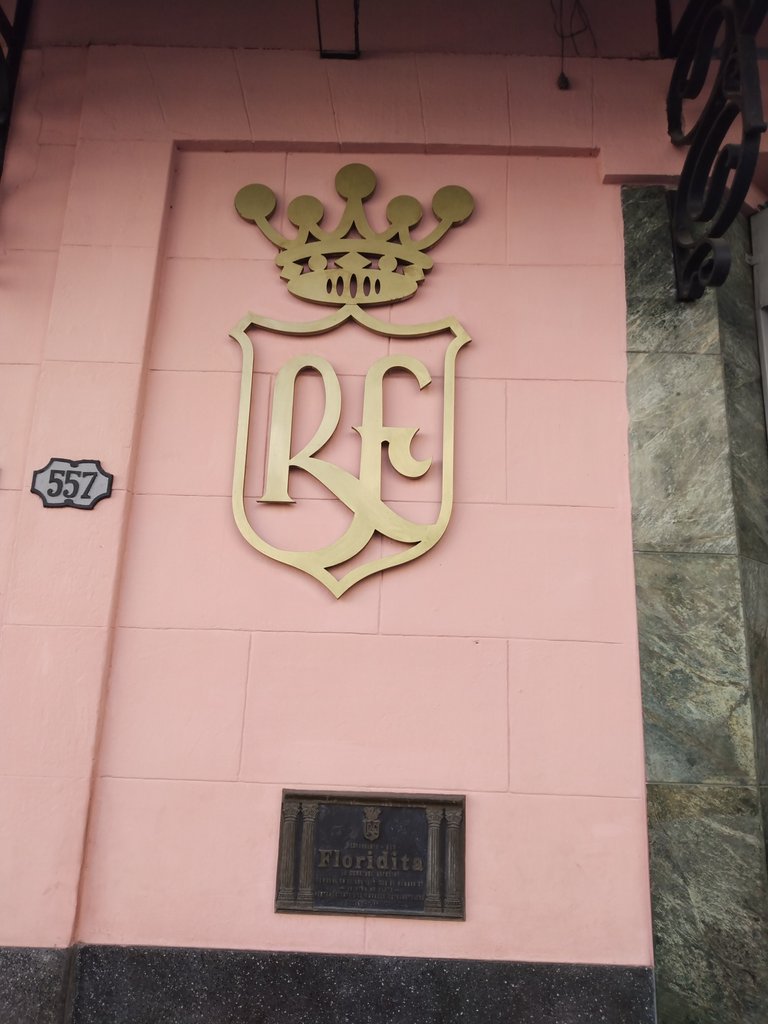
Just behind the bar-restaurant is the House of Rum and Tobacco of the same name.

Just in front, there is a small square with a beautiful fountain in its centre where stands a monument built in marble in honour of the illustrious engineer Francisco de Albear y Lara (1816-1887) who was the designer of one of the seven wonders of Cuban architecture, the ‘’Albear Aqueduct‘’.
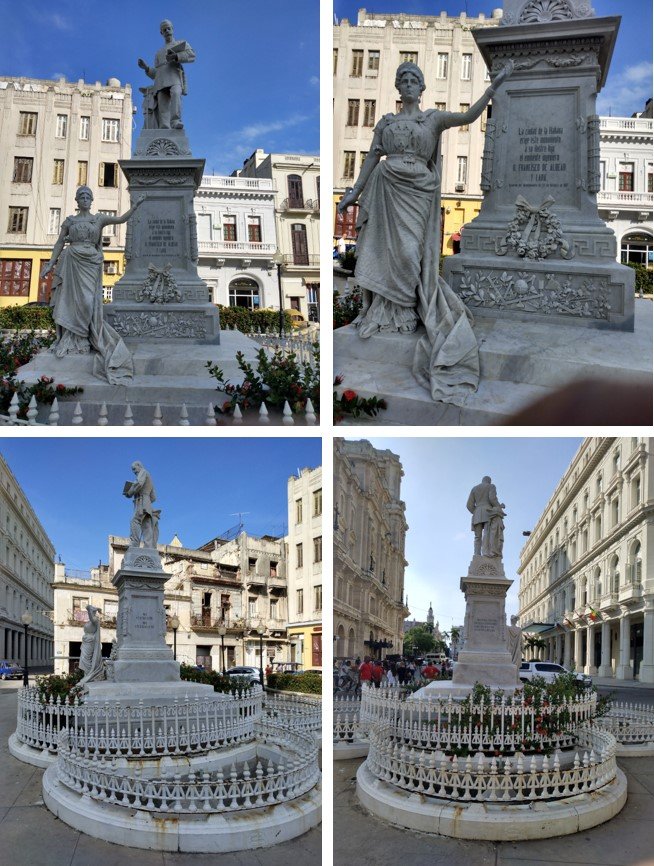
Very close to the aforementioned places on the corner of Bernaza and Obispo streets are two buildings where lovers of reading can satisfy their literary desires. These are the bookshops ‘’Ateneo Cervantes‘’ and ‘’La Moderna Poesía‘’. Almost permanently, at the entrance of La Moderna Poesía there is a stall where delicious coconuts are sold.
Bookshop ‘’Ateneo Cervantes‘’.
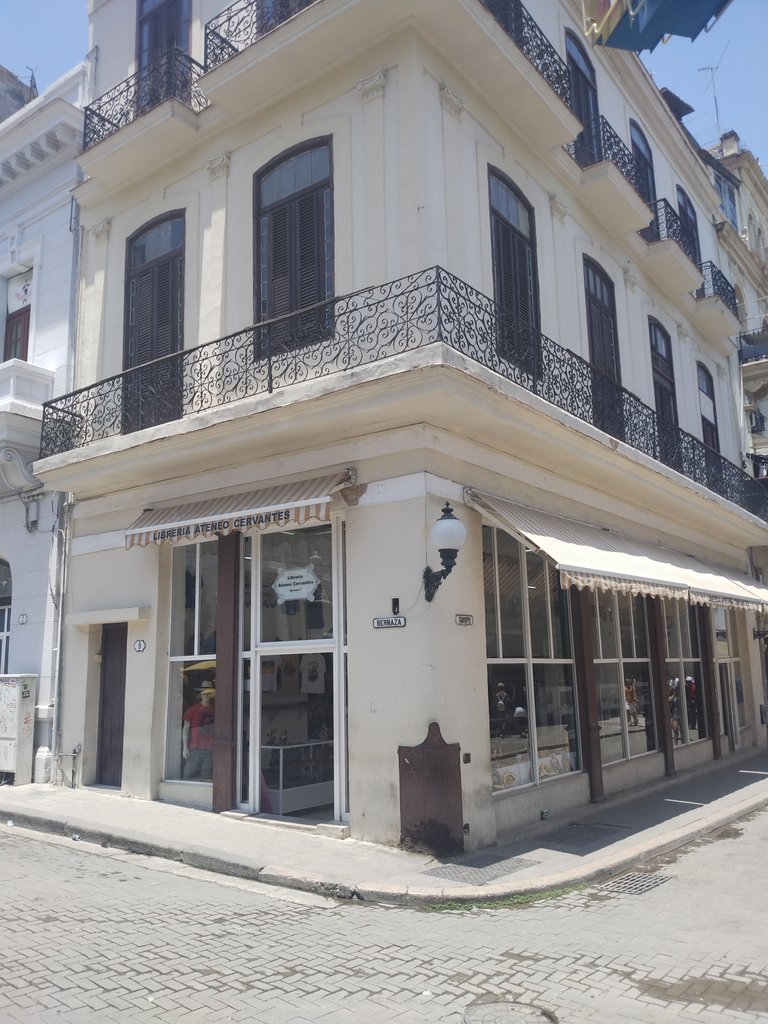
Bookshop ‘’La Moderna Poesía‘’.
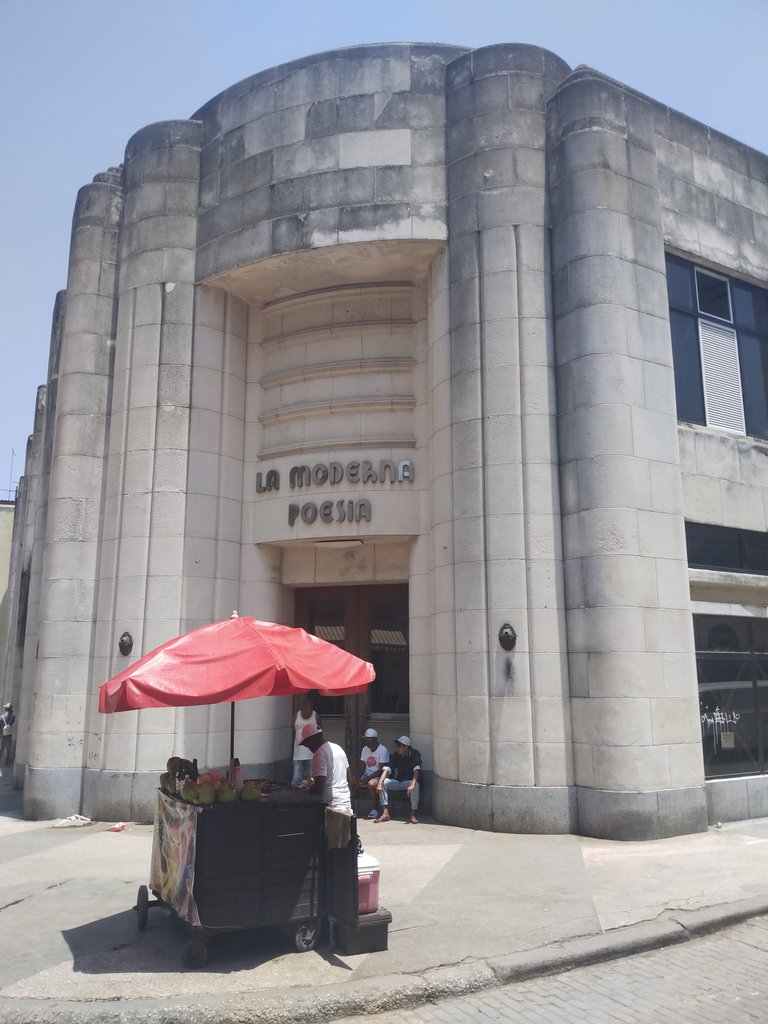
View of Obispo Street, looking west.

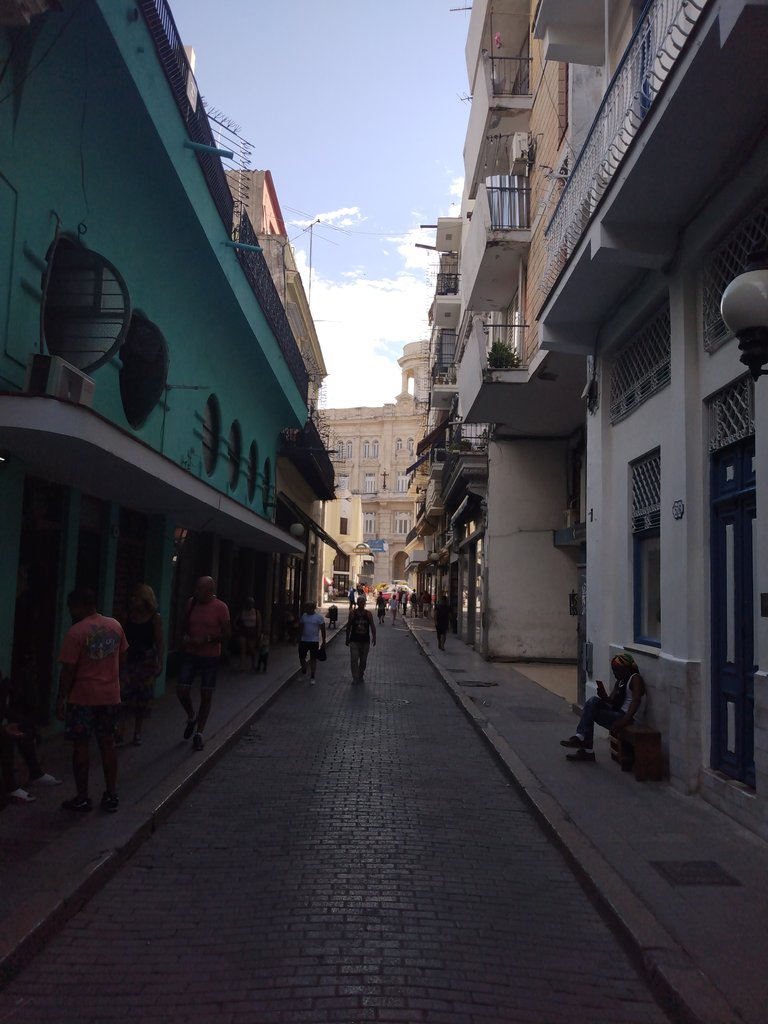
About 50 metres further down and in the direction of the bay. On the corner of Obispo and Villegas streets is the ‘’Sodería Obispo‘’. I particularly like this place because I am an ice-cream lover and here they offer the most diverse and delicious flavours such as: mango, chocolate, pistachio, orange-pineapple, vanilla, strawberry, apple, etc.
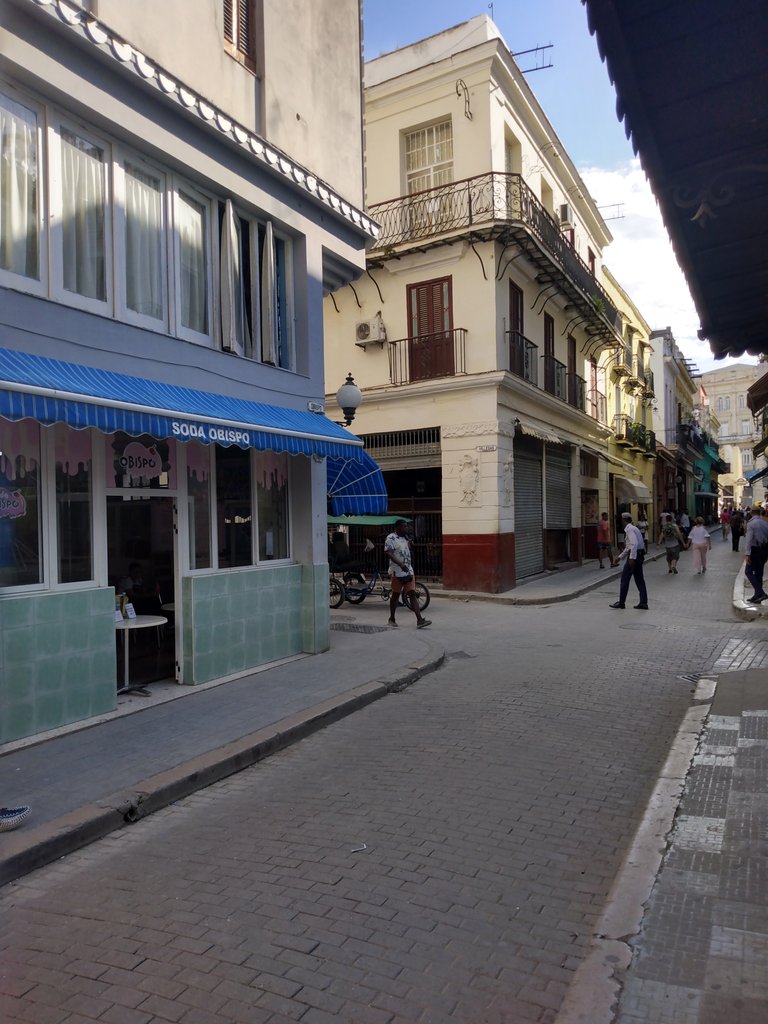
One block later we find a small park with a graceful metal sculpture that alludes to the famous character ‘’Sancho Panza‘’ from the classic novel Don Quixote of La Mancha. This sculpture was designed by the excellent Cuban artist Leo D' Lázaro who has the ability to give life to the inanimate from elementary forms.
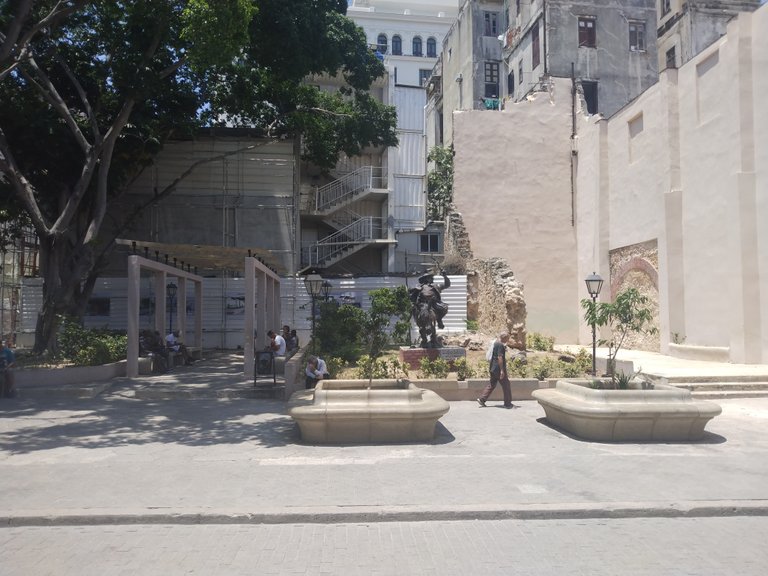
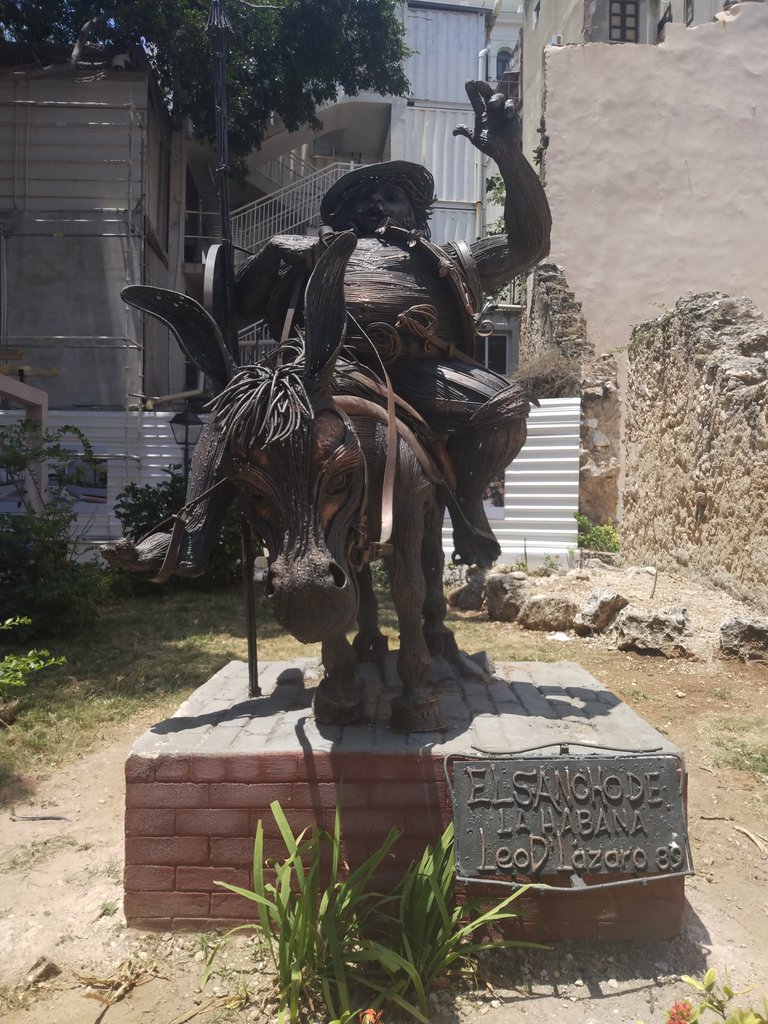
We continue our journey eastwards along Obispo Street. At the intersection with Aguiar Street there are huge buildings that attract attention for their imposing neoclassical style, such as the ‘’Johnson drugstore‘’ and others.
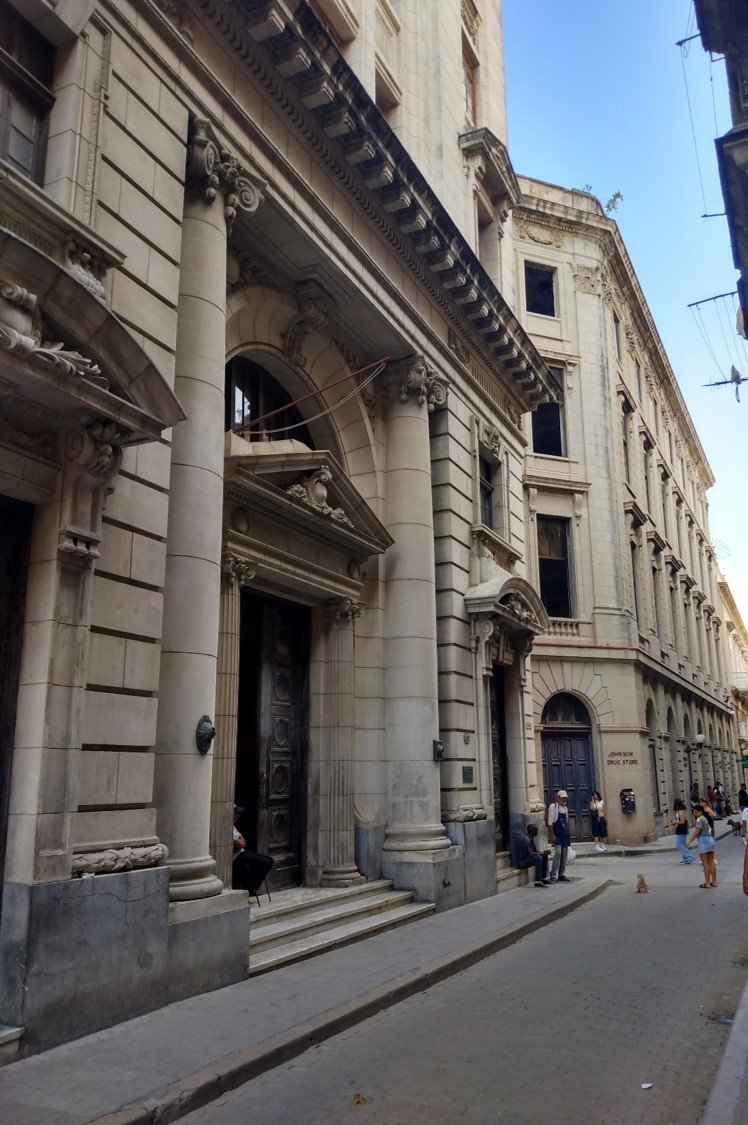
Other views of Obispo Street.
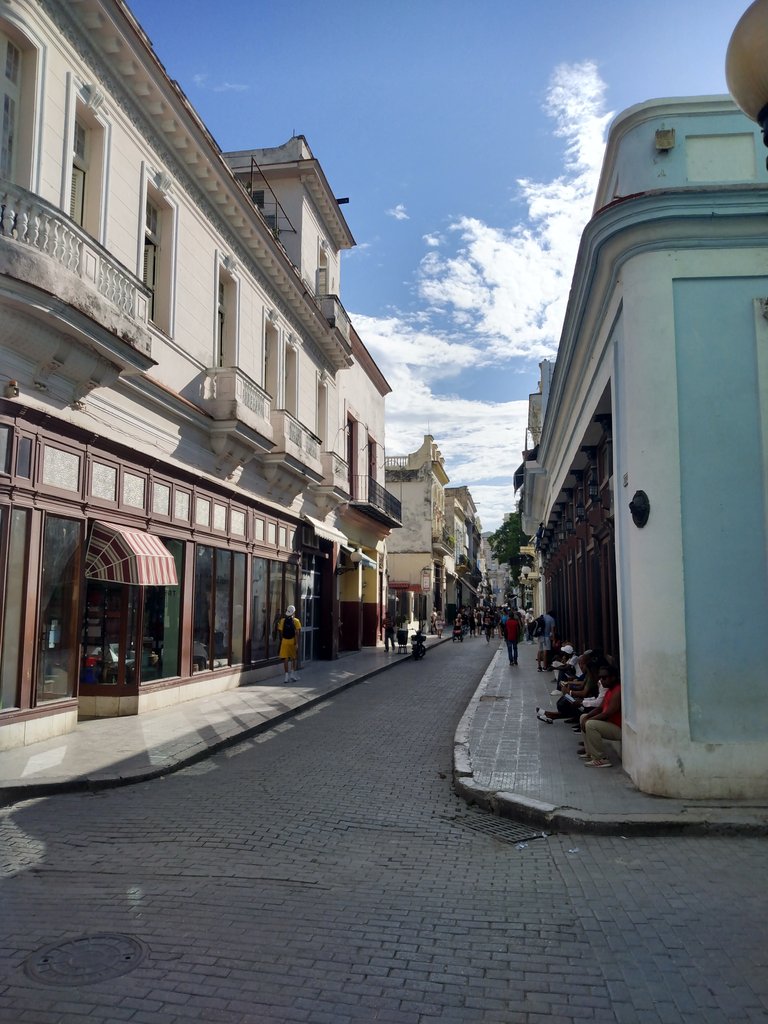
The San Gerónimo de La Habana University College is another of the buildings that stands out with its beautiful glasswork, after its restoration in 2008. This prestigious institution offers a degree in Preservation and Management of Historical and Cultural Heritage, where specialists in Archaeology, Museology and Urban and Socio-cultural Management are trained.
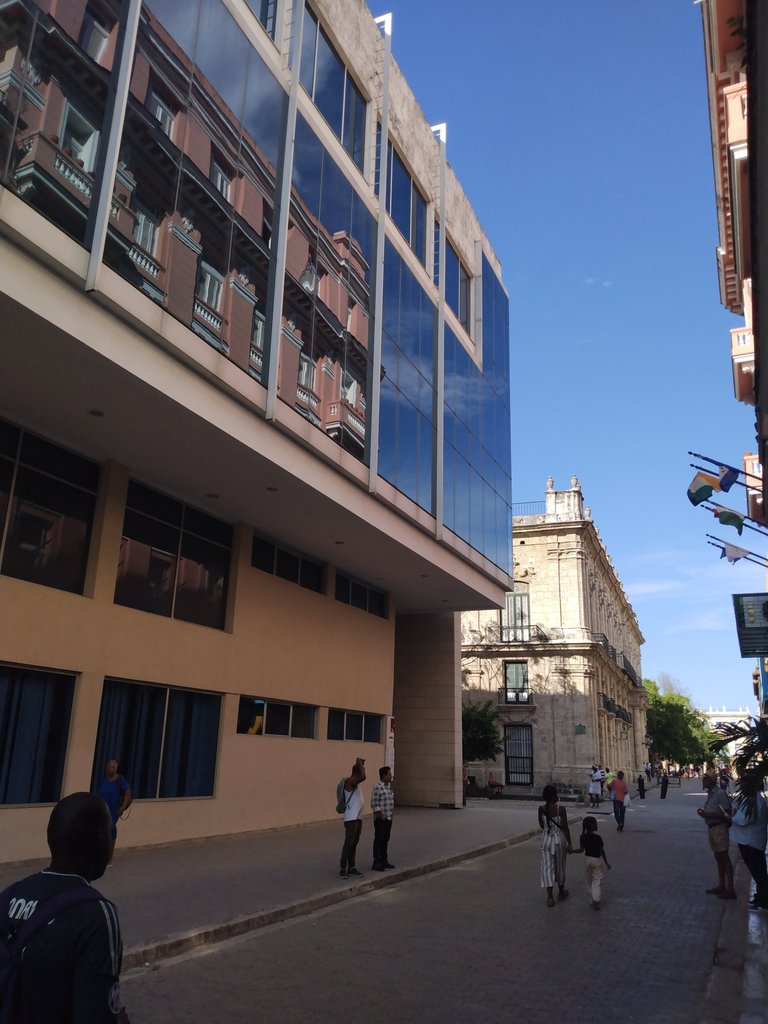
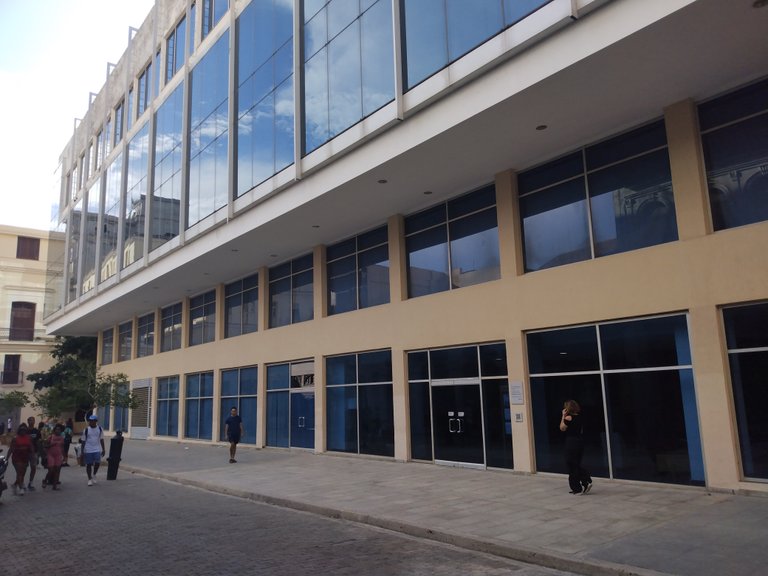
Here is the shop ´´El Quitrín´´, where traditional Cuban clothes are made.
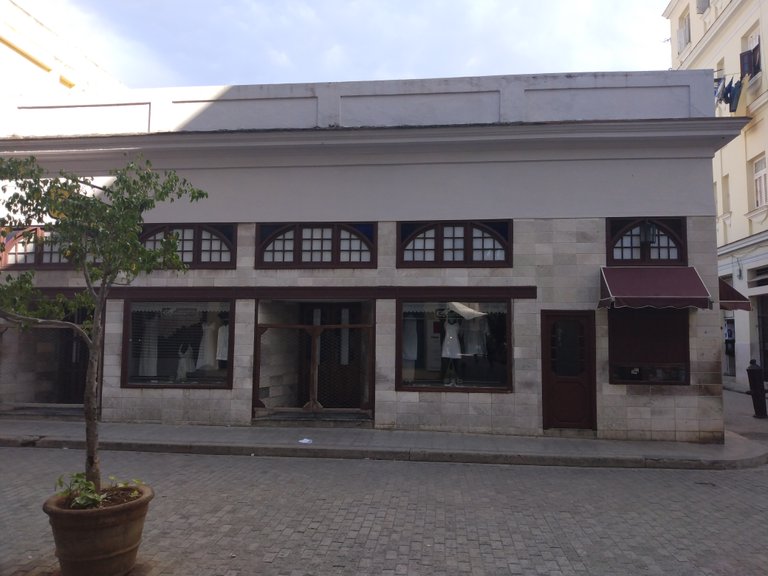
At the corner of Mercaderes and Obispo streets stands a beautiful four star hotel that boasts one of the best views of the historic centre, the Hotel ‘’Ambos Mundos‘’, a sturdy eclectic style building from the beginning of the 20th century that gained its international fame when it hosted Ernest Hemingway for a period of seven years. The room in which the writer stayed is still preserved in its interior as a small museum.
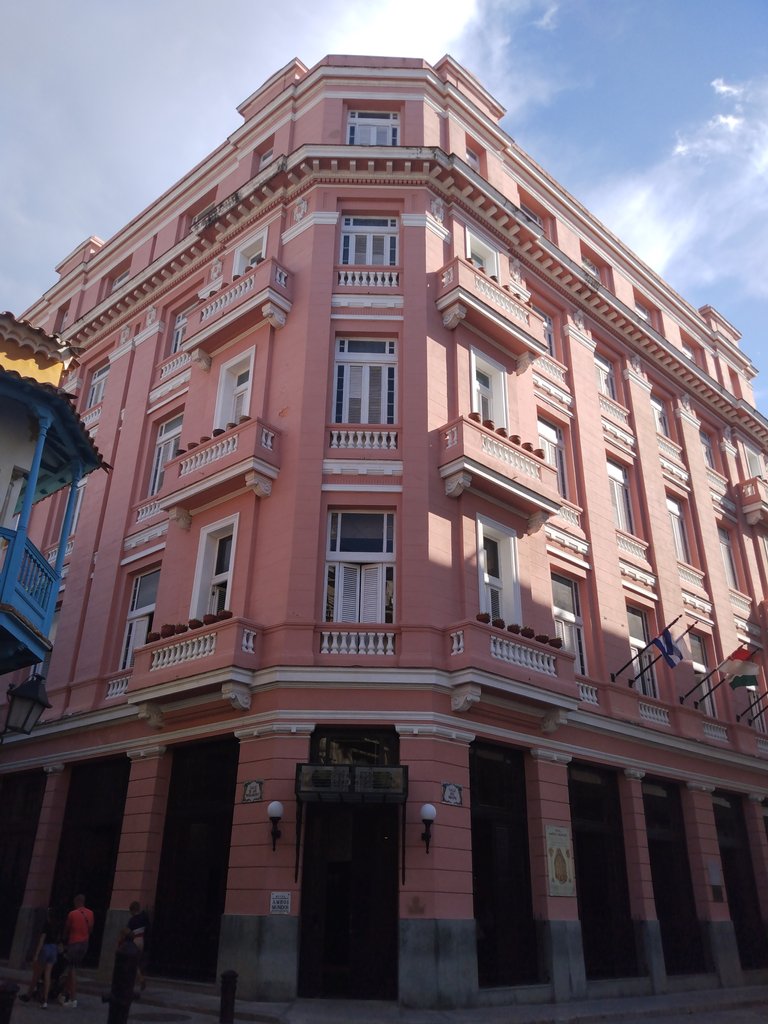
Beautiful colonial architectural style building next to the Hotel ´´Ambos Mundos´´.

Near the end of the tour, we can find interesting museums such as: the Museum of Mural Painting, the House of Goldsmiths, the Palace of the Captains General, the Museum of Natural History, as well as the Dulcería Doña Teresa.
House of Goldsmiths

Museum of Mural Painting
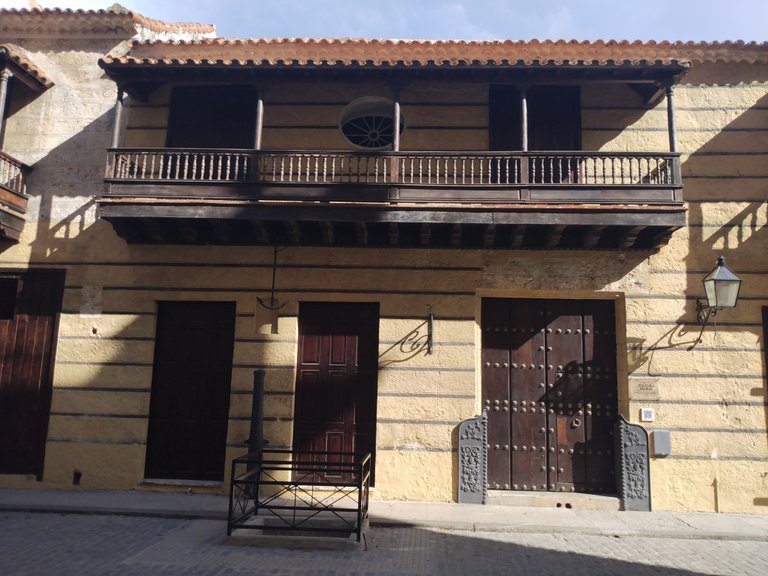
Palace of the Captains General
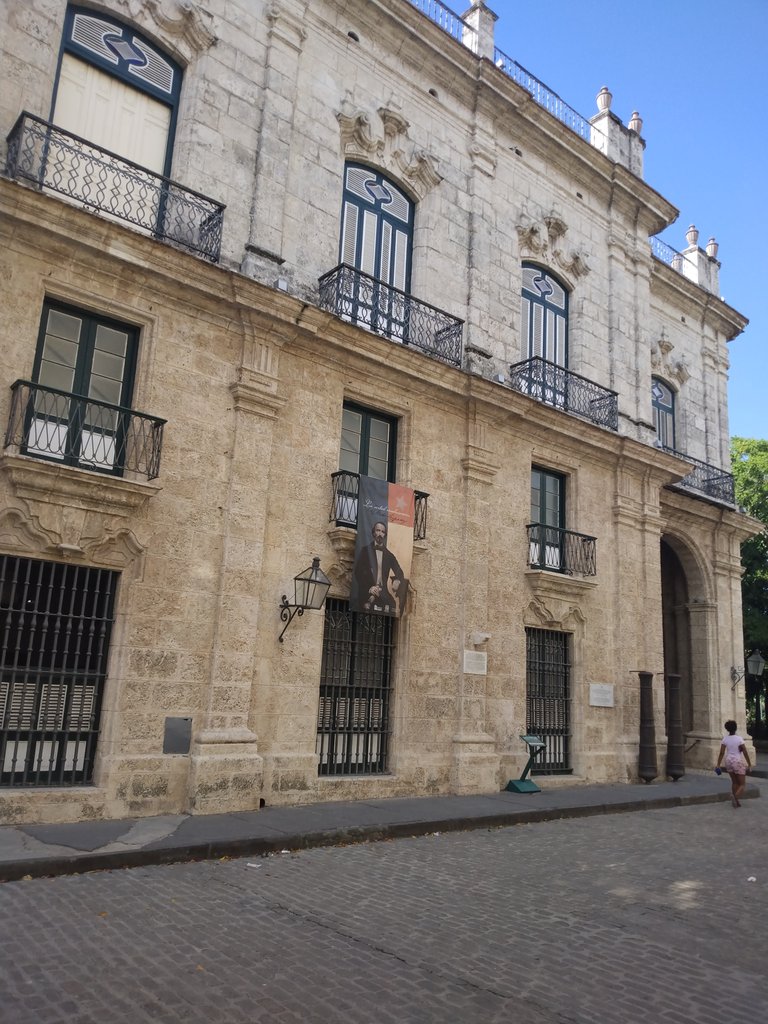
Museum of Natural History
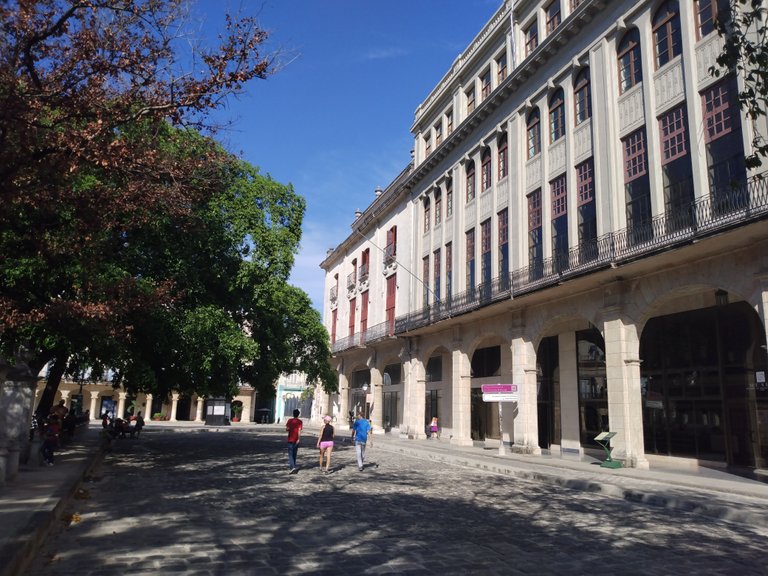
Dulceria Doña Teresa
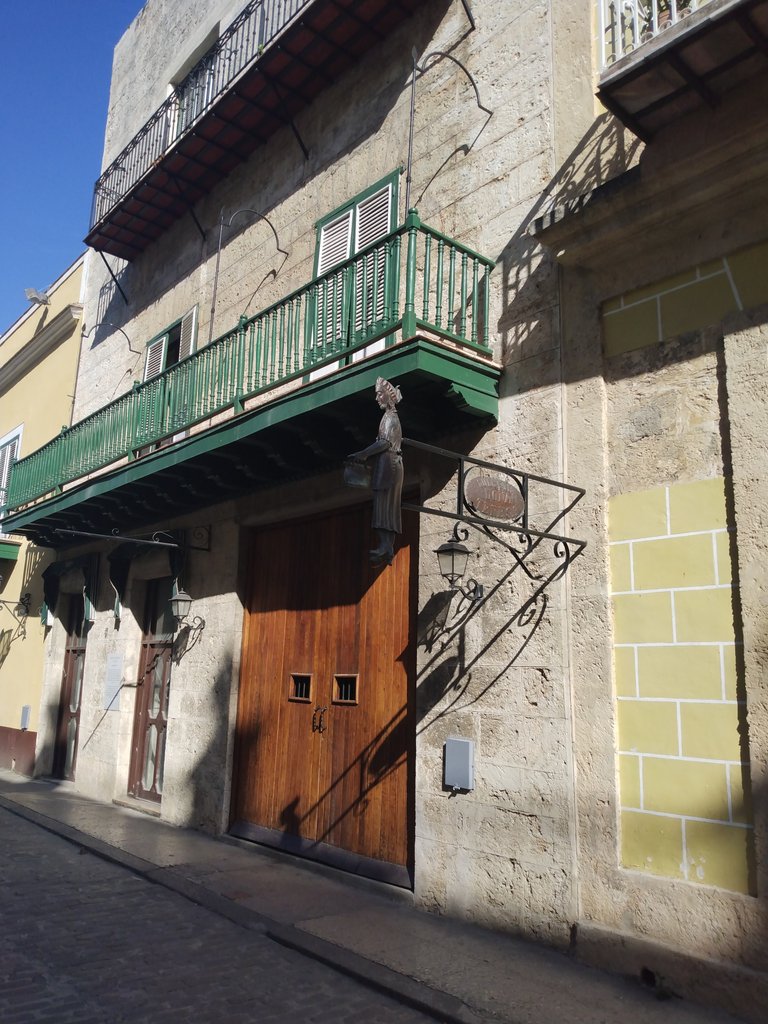
Panoramic view from the Plaza de Armas.
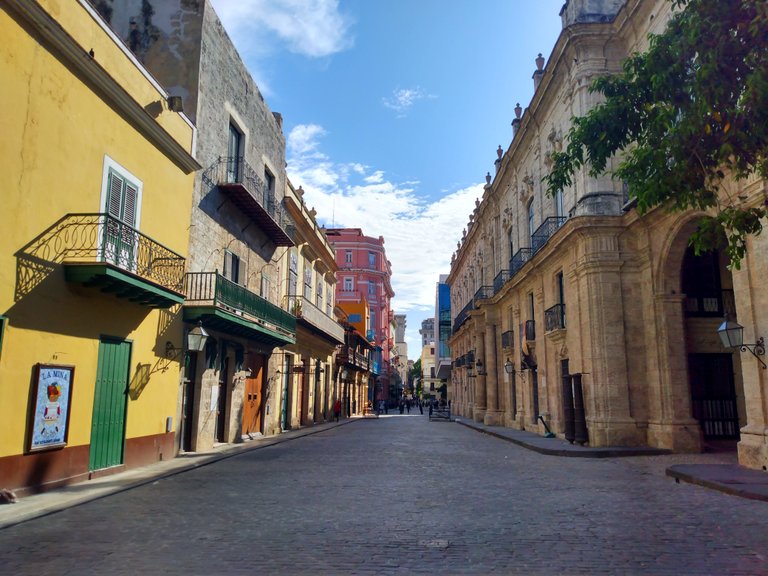
Finally, we end our tour in the emblematic ´´Plaza de Armas´´, a place to take a break and enjoy the breeze coming from the bay under the shade of the leafy trees that are located there.
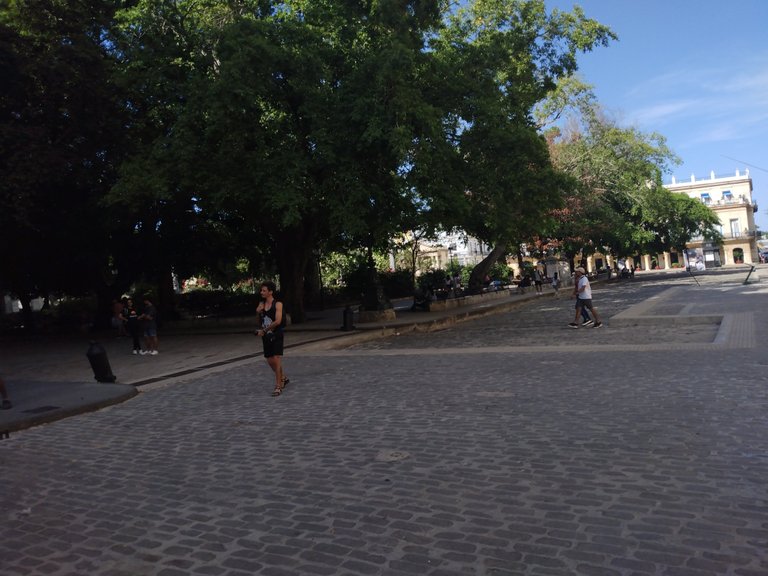
This is the end of our tour of the Boulevard de Obispo in the Cuban capital. I hope you enjoyed it and I urge you to visit it if you ever decide to travel to Havana. Thank you very much for your time and see you on the next adventure!
All photos are my own and were taken with my MOTO G PLAY (2021) mobile phone.
Translated from DeepL.
Versión en Español
Hola estimada comunidad de viajeros!! En esta ocasión les compartiré imágenes de mi recorrido por uno de los sitios más emblemáticos y transitados de La Habana, el ´´Boulevard de Obispo´´. Ubicado en el mismísimo corazón de La Habana Vieja. Constituye una de las calles más populares del casco histórico con una longitud de un kilómetro se extiende desde la avenida del puerto hasta la calle Monserrate. En un principio, se denominaba San Juan ya que conducía a la iglesia San Juan de Letrán del Consulado. Posteriormente, en el año 1897 obtuvo el nombre del Capitán General Valeriano Weyler, pero en 1898 los habaneros destruyeron las tarjas en alusión a su nombre y en 1905, le pusieron el nombre de Pi Margall, en conmemoración a quien fuera un apasionado defensor de los derechos e independencias de Cuba en España. Ya, finalmente en 1936, con la instauración de los nombres pretéritos y tradicionales de la capital se identificó con el nombre que presenta en la actualidad.
Justo al inicio del Boulevard nos encontramos con el famoso bar ´´Floridita´´ fundado en 1817, donde puede desgustar de prestigiosos cócteles y otras suculentas bebidas como el famoso Mojito ´´Daiquirí ´´, bebida preferida del célebre escritor norteamericano Ernest Hemingway. De ahí que este bar obtuvo su eslogan ´´La cuna del daiquirí´´.
Pueden ver como a un costado del Floridita se encuentran unos vehículos triciclos con forma caprichosa y amarillos conocidos como ´´Cocotaxis´´ ya que se asemejan a esta fruta.
Logotipo del bar-restaurante Floridita.
Detrás del bar-restaurante se encuentra la Casa del Ron y el Tabaco del mismo nombre.
Justo al frente, se encuentra una pequeña plazoleta con una hermosa fuente en su centro donde se erige un monumento construido en mármol en honor al ilustre ingeniero Francisco de Albear y Lara (1816-1887) quien fuera el diseñador de una de las siete maravillas de la arquitectura cubana, el ´´Acueducto de Albear´´.
Muy cerca de los sitios antes mencionados en la esquina de las calles Bernaza y Obispo se encuentran dos inmuebles donde los amantes a lectura pueden satisfacer sus deseos literarios. Se trata de las librerías ´´Ateneo Cervantes´´ y ´´La Moderna Poesía´´. Casi permanentemente, a la entrada de la Moderna Poesía se encuentra un puesto, donde se venden deliciosos cocos.
librería ´´Ateneo Cervantes´´
librería ´´La Moderna Poesía´´
Vista de la calle Obispo, mirando hacia en dirección oeste.
Unos 50 metros más abajo y en dirección a la bahía. Se encuentra en la esquina de las calles Obispo y Villegas se encuentra la ´´Sodería Obispo´´ este sitio, en particular, me gusta mucho ya que soy un amante de los helados y aquí se ofertan de los más diversos y deliciosos sabores como: mango, chocolate, pistacho, naranja-piña, vainilla, fresa, manzana, etc.
Una cuadra después nos encontramos con un parquecito con una graciosa escultura en metal que hace alusión al famoso personaje ´´Sancho Panza´´ de la clásica novela Don Quijote de La Mancha. Esta escultura fue diseñada por el excelente artísta cubano Leo D´ Lázaro quien tiene la capacidad de conferirle vida a lo inanimado a partir de formas elementales.
Siguiendo nuestro recorrido hacia el Este por la calle Obispo. En la intersección con la calle Aguiar se erigen enormes edificaciones que llaman la atención por su imponente estilo neoclásico como la ´´droguería Johnson´´ y otros.
Otras vistas de la calle Obispo.
El Colegio Universitario San Gerónimo de La Habana es otra de las edificaciones que destaca con sus hermosas cristalerías, después de su restauración en 2008. En esta prestigiosa institución se estudia la carrera Preservación y Gestión del Patrimonio Histórico-Cultural, donde se forman especialistas en Arqueología, Museología y Gestión Urbana y Sociocultural.
He aquí la tienda El Quitrín, donde se elabora ropa tradicional cubana.
En la esquina de las calles Mercaderes y Obispo se alza un hermoso hotel cuatro estrellas que presume de tener una de las mejores vistas del casco histórico, se trata del Hotel ´´Ambos Mundos´´ conformado por una robusta construcción estilo ecléctico de inicios del siglo XX ganó su fama internacional cuando hospedó al Ernest Hemingway, durante un periodo de 7 años. Aún en su interior se conserva a modo de un pequeño museo, la habitación en que se hospedó el escritor.
Una Hermosa construcción de estilo arquitectónico colonial al lado del Hotel ´´Ambos Mundos´´.
Ya casi al final del recorrido, podemos encontrar interesantes museos como: el Museo de La Pintura Mural, la Casa de la Orfebrería, el Palacio de los Capitanes Generales, el Museo de Historia Natural, asi como la Dulcería Doña Teresa.
Casa de la Orfebrería.
Museo de la Pintura Mural.
Palacio de los Capitanes Generales.
Museo de Historia Natural.
Dulcería Doña Teresa.
Vistas panorámicas desde la Plaza de Armas.
Finalmente, culminamos nuestro recorrido en la emblemática Plaza de Armas, sitio para tomar un descanso y disfrutar de la brisa proveniente de la bahía bajo la sombra de los frondosos árboles que en ella se ubican.
Hasta aquí nuestro recorrido por el Boulevard de Obispo en la capital cubana. Espero lo hayan disfrutado y les exhorto a visitarlo si alguna vez deciden viajar a La Habana. Muchas gracias por su tiempo. ¡Nos vemos en la próxima aventura!!!
Todas las fotos son de mi autoría y fueron tomadas con mi teléfono móvil MOTO G PLAY (2021).
Traducido desde DeepL.

